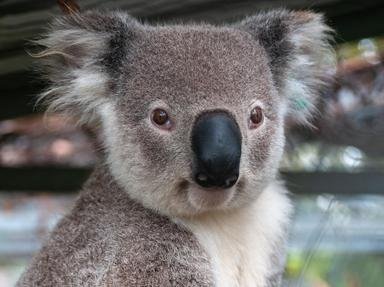Quiz Answer Key and Fun Facts
1. Australia's version of the Easter Bunny
2. Backward facing pouch
3. Broadest snout
4. Strongest jaws of any marsupial
5. Able to imitate man made sounds, such as a mobile phone ring
6. Surprisingly venomous for its small size
7. Only member of genus Setonix
8. Changes colour with season
9. Known as the bushman's clock
10. Does an elaborate courtship dance
Source: Author
pollucci19
This quiz was reviewed by FunTrivia editor
rossian before going online.
Any errors found in FunTrivia content are routinely corrected through our feedback system.
